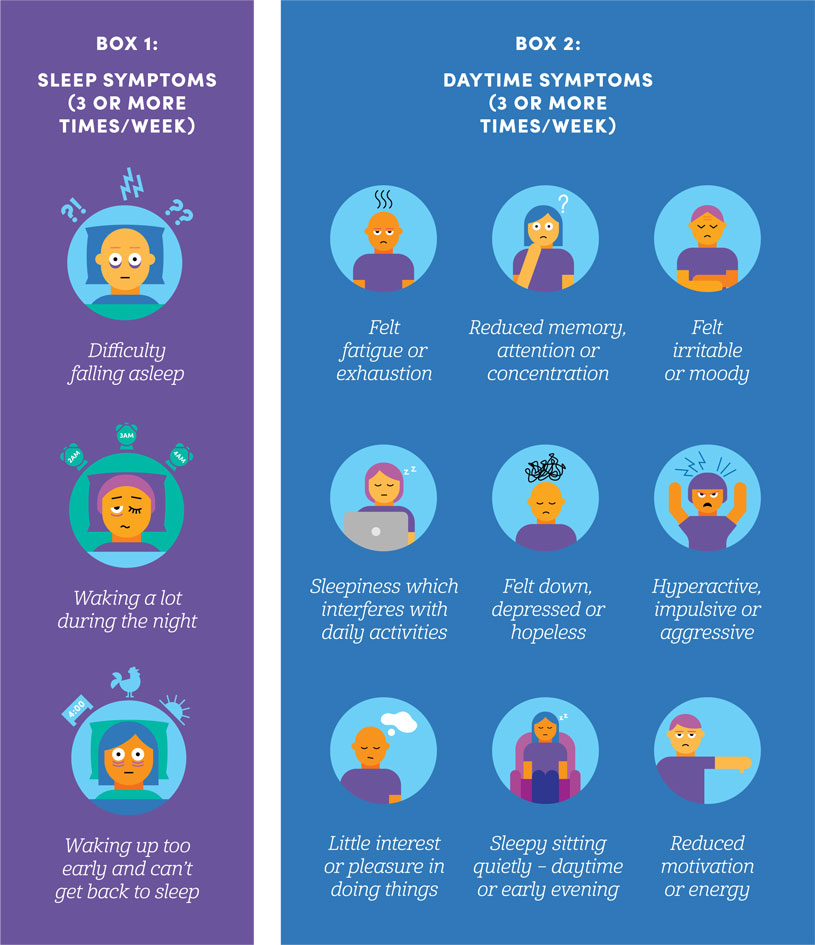
Insomnia
What is insomnia?
Many people occasionally experience difficulties sleeping. Usually, these brief disturbances are due to stress, travel, illness, or other temporary interruptions to your normal routine.
However, if you regularly have problems getting to sleep at night, going back to sleep if you wake during the night, and wake up feeling exhausted you may be suffering with insomnia. Sleep disorders often cause daytime fatigue and can take a serious toll on your mental and physical health.
Research shows that up between 7% and 15% of Australians report experiencing Insomnia. Insomnia is broadly defined as issues surrounding sleep. Some of these issues include difficulty or inability to fall asleep, frequent or prolonged night waking, waking too early and not being able to go back to sleep, and distress or difficulty in everyday functioning due to poor sleep.

- “Photo sourced from the Sleep Health Foundation.”
What causes insomnia?
There is no one clear cut cause of insomnia. Rather, insomnia is often caused and maintained by a unique combination of factors, such as physical and mental illness history, genetic vulnerability, stress, changes in life circumstances, medications, and poor sleep habits.
How to treat insomnia?
1. Sleep restriction
Sleep restriction therapy targets the amount of time you spend lying in bed. Typically, individuals with insomnia spend hours lying awake in bed, unable to fall asleep. This treatment reduces the amount of time you spend in bed. Your time in bed is gradually increased over time to promote a more stabilised sleep routine. This approach is not recommended for everyone.
2. Stimulus control
3. Cognitive therapy
4. Sleep hygiene
5. Relaxation training
Sleep Distribution by Age (Based on National Sleep Foundation Recommendations)


